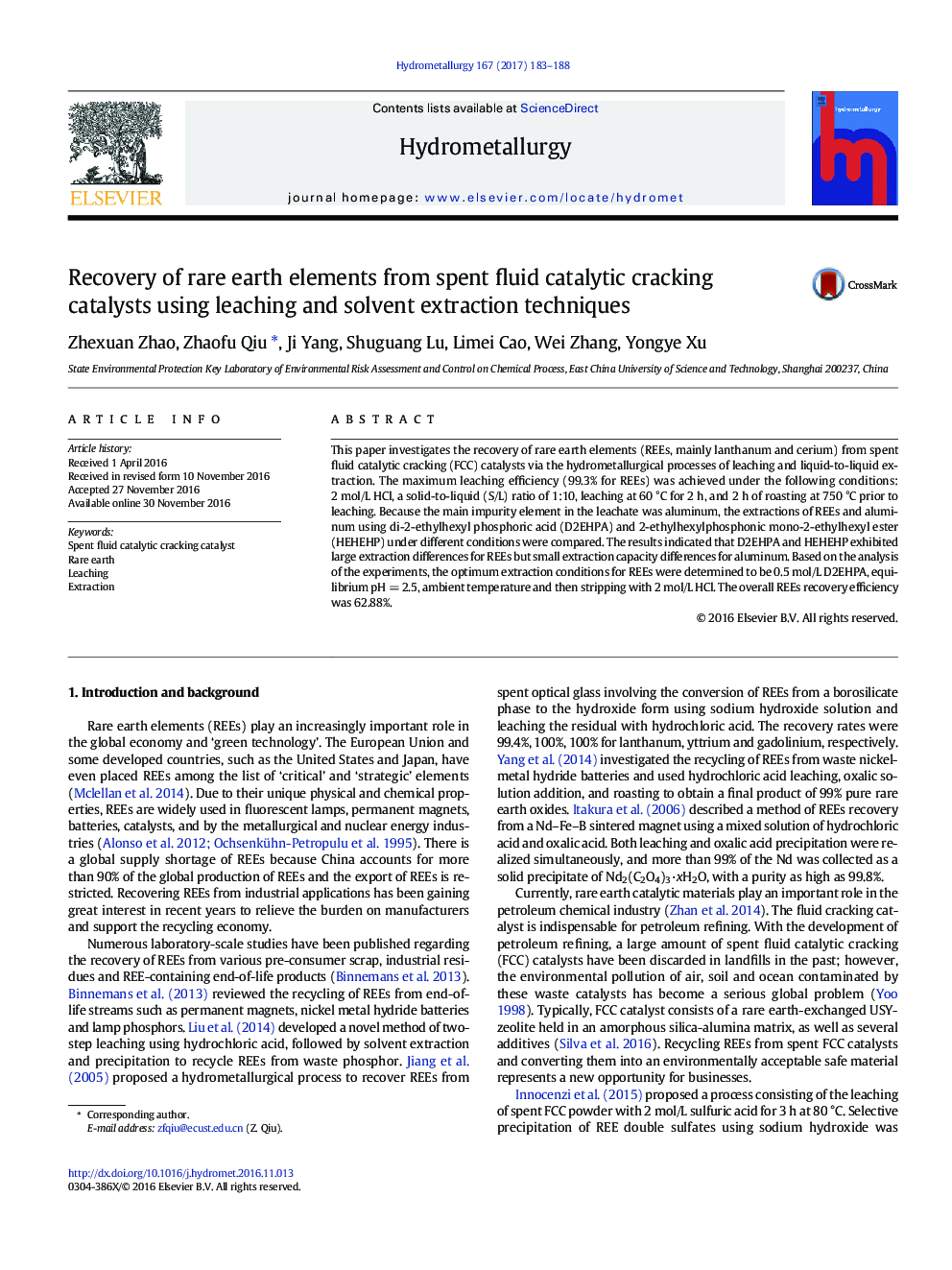| کد مقاله | کد نشریه | سال انتشار | مقاله انگلیسی | نسخه تمام متن |
|---|---|---|---|---|
| 4769401 | 1425537 | 2017 | 6 صفحه PDF | دانلود رایگان |
- An efficient method to recover REEs from spent FCC catalyst was HCl leaching, followed by D2EHPA extraction.
- Under the optimal conditions, the leaching efficiency and extraction efficiency of REEs were 99.3% and 85.1% respectively.
- Effect of organics of spent FCC catalyst on REEs leaching was investigated.
- The biggest obstacle to separate REEs from the leachate was Al3Â + with high concentration.
- D2EHPA and HEHEHP showed big different extraction efficiencies on REEs while small on Al.
This paper investigates the recovery of rare earth elements (REEs, mainly lanthanum and cerium) from spent fluid catalytic cracking (FCC) catalysts via the hydrometallurgical processes of leaching and liquid-to-liquid extraction. The maximum leaching efficiency (99.3% for REEs) was achieved under the following conditions: 2 mol/L HCl, a solid-to-liquid (S/L) ratio of 1:10, leaching at 60 °C for 2 h, and 2 h of roasting at 750 °C prior to leaching. Because the main impurity element in the leachate was aluminum, the extractions of REEs and aluminum using di-2-ethylhexyl phosphoric acid (D2EHPA) and 2-ethylhexylphosphonic mono-2-ethylhexyl ester (HEHEHP) under different conditions were compared. The results indicated that D2EHPA and HEHEHP exhibited large extraction differences for REEs but small extraction capacity differences for aluminum. Based on the analysis of the experiments, the optimum extraction conditions for REEs were determined to be 0.5 mol/L D2EHPA, equilibrium pH = 2.5, ambient temperature and then stripping with 2 mol/L HCl. The overall REEs recovery efficiency was 62.88%.
Journal: Hydrometallurgy - Volume 167, January 2017, Pages 183-188
